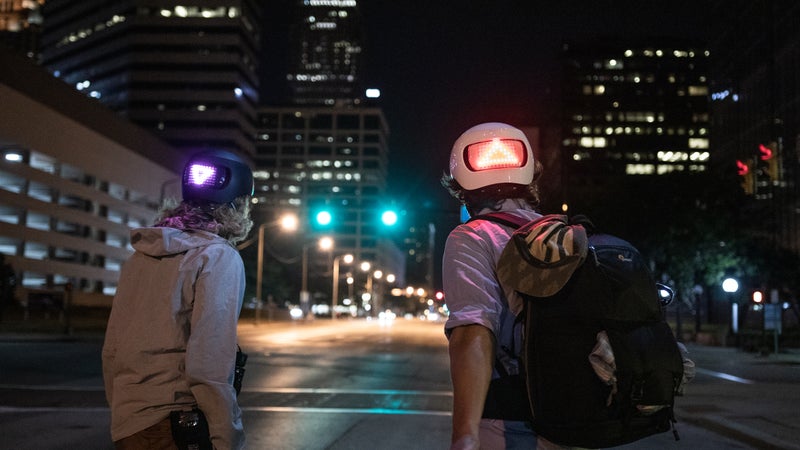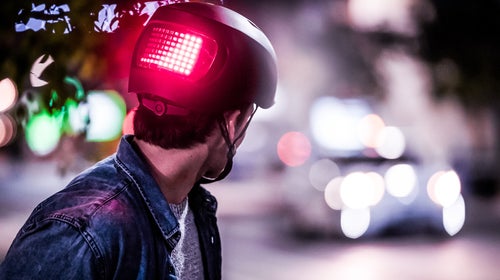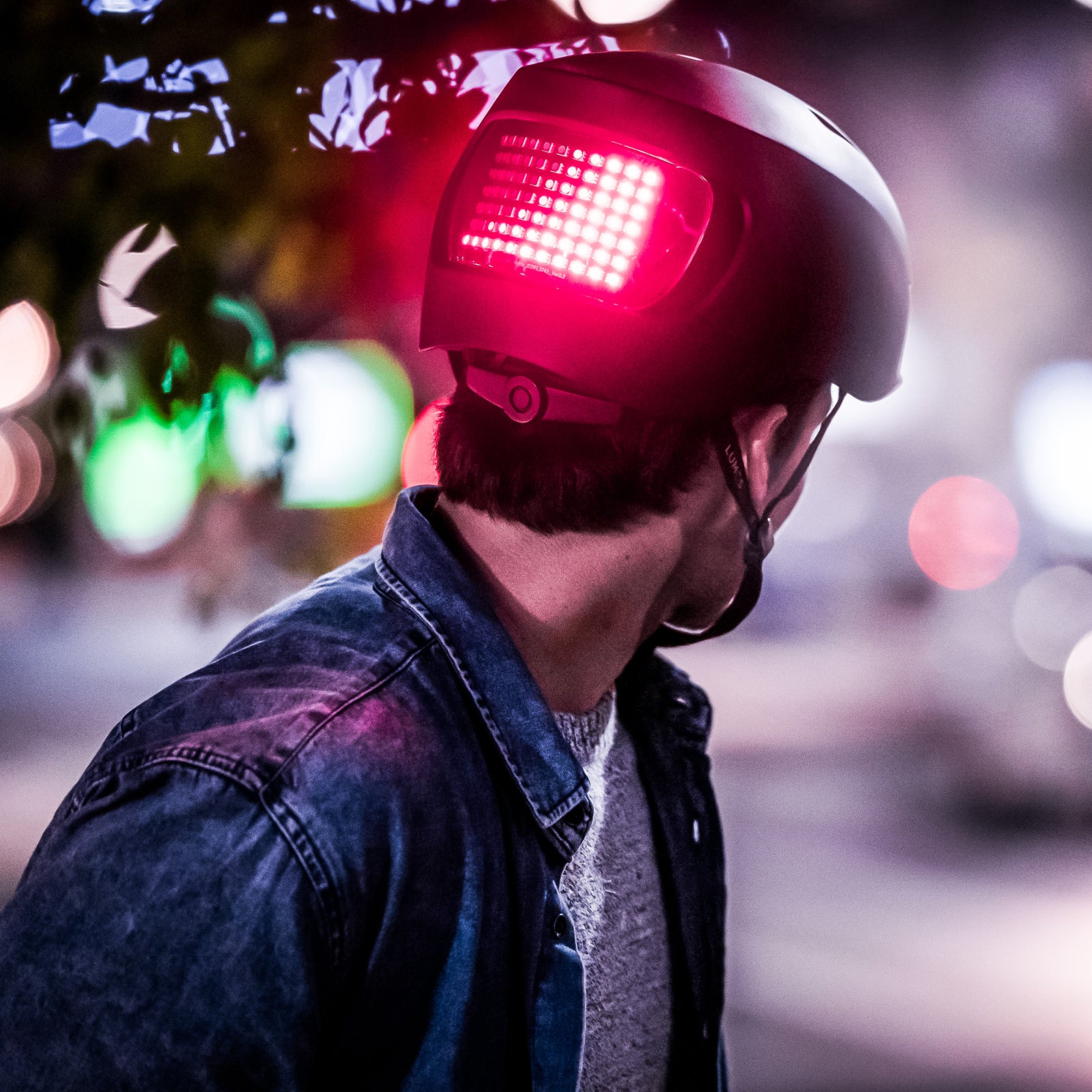We live in the age of the smart device. Watches, thermostats, —it’s increasingly hard to find an everyday object that doesn’t offer you some level of connectivity in exchange for access to your precious personal data.
So why should the bicycle helmet be any different? Made from EPS foam and fundamentally unchanged since the advent of the Bell Biker back in the mid-1970s, the humble brain bucket was overripe for some 21st century-style disruption. Enter the , a $250 urban “smart helmet” with a customizable 7×11 dot matrix display that ostensibly keeps you safe by “lighting up on your head, the highest and generally most visible spot on your body.” The Matrix has turn signals, brake lights, and a display you can program to broadcast customized messages (such as, “Please don’t kill me”).Ěý
has been around since at least 2015, when the creators received over for the concept. But the helmet received a recently with the launch of the upgraded Matrix, and now that it’s it appears that the electronic brain bucket concept has officially gone mainstream. (You customize the lights and display field through an app, and if you have an Apple Watch,Ěýyou can also use hand signals toĚýtrigger theĚýturn signals.)ĚýĚý
It’s only natural to view the “Internet of things” (as explains it, “the idea of connecting any device with an on and off switch to the Internet”) with a certain amount of cynicism, especially if you’re of a certain age. After all, you made do with a legal pad and a No. 2 Ticonderoga for years, and now here’s Apple telling you that you need a $799 tablet and a $99 pencil that needs to be charged instead of sharpened. Nevertheless, only the most committed and extreme contrarian would attempt to argue that the Apple Pencil is a harbinger of doom that represents some sort of fundamental breakdown in human expression. An idea is an idea, regardless of whether you jot that idea down in graphite or in pixels.
The Lumos Matrix, however, is truly dystopian—not because it’s inherently malevolent, but because it’s a potent symbol of just how completely we’ve surrendered to motor vehicles. That so many people, from the designers to the retailers to the customers, seem to think it’s perfectly reasonable to ride a bicycle in the city while wearing a scrolling message board on your head is profoundly depressing. If the air quality was so bad that the Apple store started selling smart gas masks, no doubt we’d come to the collective realization that we areĚýdeeply fucked and that we are dealing with the sorts of apocalyptic problems that gadgets alone simply can’t solve.

Yet, when faced with (report released this week, the cyclist death toll increased by 6.3 percent in 2018), and then presented with a piece of cycling “safety gear” that looks like a prop from RoboCop, we simply take for granted that this is the way things are going and that what we need is a better helmetĚýto signal our intentions. We don’t recoil from these garish dunce caps that make us look like living Playmobil figurines; instead we welcome them. Moreover, before the facts are in, we call it a win for both safety and tech. “,” declared a recent Wall Street Journal headline. “There aren’t any stats yet on whether smart helmets can further improve those numbers,” the article went on, “but it’s reasonable to assume that increased visibility and illuminated turn indicators would decrease your chances of being hit, said Steve Rowson, director of the Virginia Tech Helmet Lab.”
Is it reasonable to assume this though? What good is a turn signal in a right hook collision, where the cyclist isn’t turning at all, and where that drivers aren’t even checking for cyclists or pedestrians in the first place? And sure, at first blush the Lumos’s brake light might seem pretty useful, inasmuch as a from the revealed that “rear end” collisions accounted for 40 percent of fatal bicycle crashes. However, driver-on-cyclist rear-endings are a lot different than the driver-on-driver variety, and while the latter may happen because the driver behind didn’t realize the driver ahead is slowing down, according to a 2014 study by the League of American Bicyclists, the former most often occurs when a motorist tries to overtake a cyclist. Visibility isn’t the problem; reckless driving is. So while yes, it’s commonly accepted that lights enhance cyclist safety, it’s also highly optimistic to suggest that replicating the tail end of a Honda Civic on your head is going to keep you meaningfully safer than simply using the bike lights you already have and signaling with your hands.
None of this is to say that Lumos are evil for marketing the Matrix. We can only assume they’re simply trying to make a better helmet, and there’s nothing wrong with that. However, we should also question why we’re so receptive to devices like the Matrix, because, like the gas mask analogy, they’re a very a clear sign that there’s something is wrong with our environment. And before you strap on your connected helmet, keep in mind that in so doing you’re also helping absolve drivers of responsibility, because the easier it is for them to blame us if we don’t use it. They already say we “come out of nowhere” because they can’t be bothered to look for us, so just wait until they’re not required to see you at all unless you’ve got a personal locator beacon in your helmet. You might as well program your Matrix dot display to read, “I surrender.”
Designing better bike helmets is a worthwhile goal, and we’re finally seeing some much-needed advancements in materials and design. As for making them “smart,” connecting our helmets to our phones seems far less urgent than getting drivers off of theirs.


